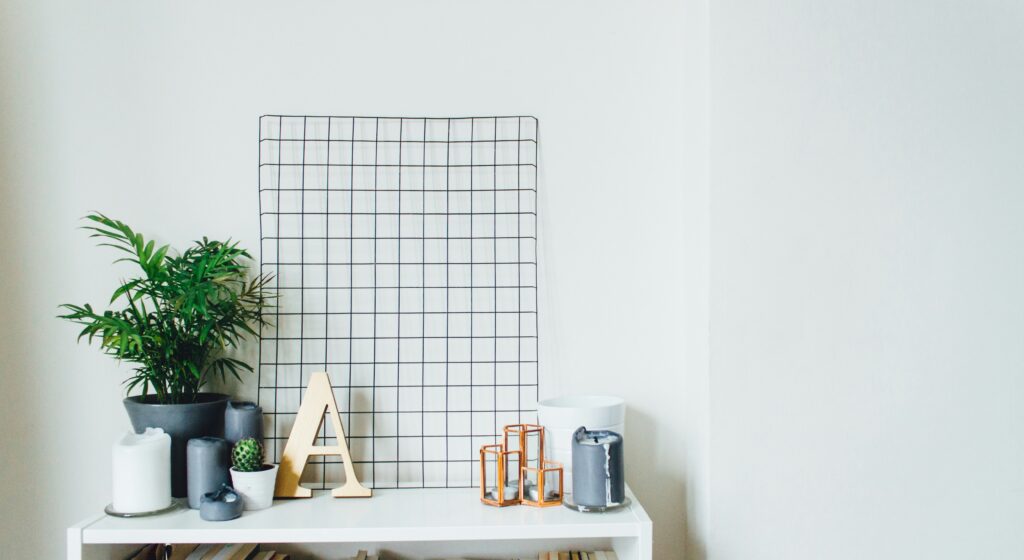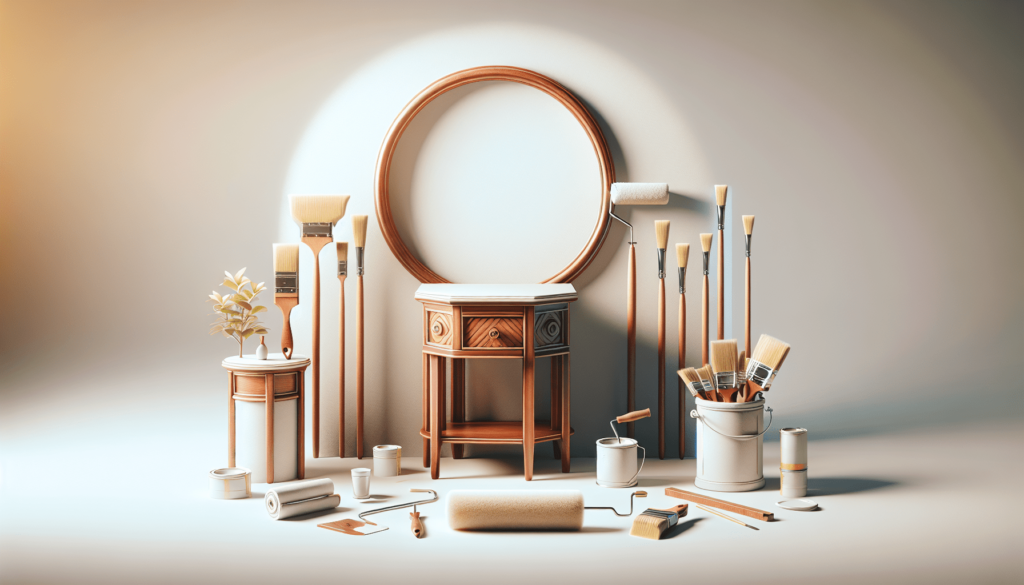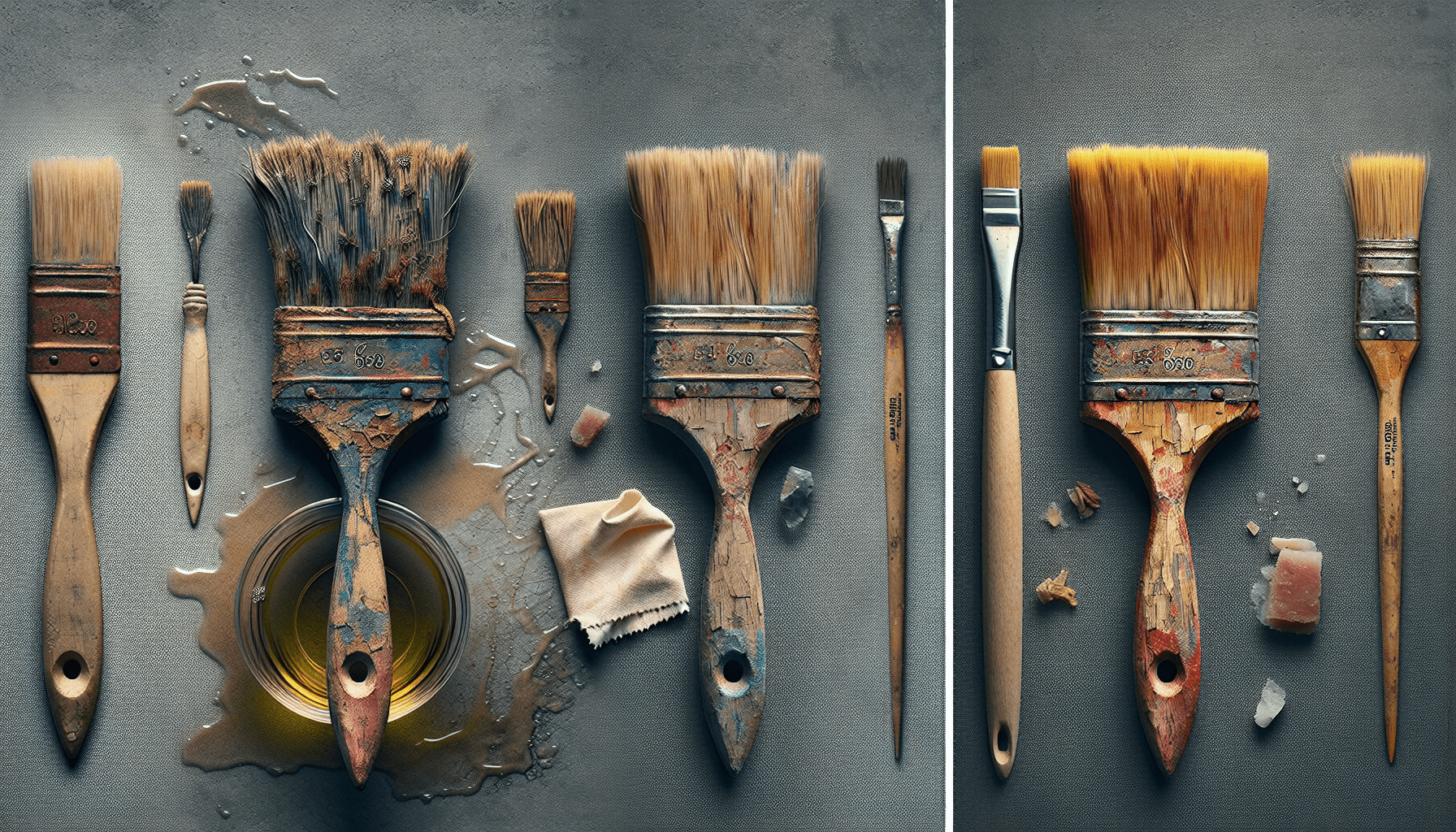In the realm of refurbishing and restoring furniture, achieving a flawless finish without visible brush marks can seem like an elusive task. Yet, with the right knowledge, it doesn’t have to be out of reach. This article provides comprehensive insights into how you can paint furniture without leaving behind a trail of unsightly brush marks. By mastering the techniques outlined here, you can elevate your furniture painting skills to a whole new level, ensuring a splendid outcome with every project you take on. Uncover the secrets of a professional-looking finish right here in “How To Paint Furniture Without Brush Marks”.
Preparation
Before you begin painting your furniture, the vital first step to ensure a beautiful, brush mark-free finish is preparation. Taking the time for proper prep work can make all the difference.
Clean the furniture
Your very first task should be to clean the furniture. Regardless of how clean you believe your furniture to be, it’s bound to have accumulated dust or grime over time. All these can interfere with the paint’s adherence to the surface. Wipe the entire piece with a damp cloth to help create a clean surface for the new paint to adhere to it firmly.
Remove existing paint or finish
Next, if your furniture piece has an old paint or finish, it’s essential to remove it. This process can involve plenty of scraping and stripping. Maintaining the correct process in removing the old paint is crucial, as any residue can inhibit the new paint from bonding with the furniture surface.
Sand the furniture
After stripping off the old paint, your next step should be sanding the furniture. Sanding smooths out the surface and promotes better paint adhesion. Take your time during this process to ensure every inch of the piece is evenly sanded.
Fill in any holes or cracks
Check the furniture carefully for any holes or cracks. Ensure that all defects are filled appropriately with a suitable wood filler. After the filler dries, sand it down to create an even surface.
Choosing the Right Tools
Your choice of tools can strongly influence whether brush marks appear on your painted furniture. Quality tools are an investment that can make your painting projects easier and yield better results.
Select a high-quality paintbrush
For furniture, you should opt for a high-quality paintbrush that doesn’t leave noticeable brush strokes. Look particularly for brushes with synthetic bristles, as they tend to be more suitable for most types of paints and leave a smoother finish.
Consider using a foam roller
A foam roller can be an excellent alternative or adjunct to paintbrushes. They’re particularly beneficial for applying paint on the larger, flatter surfaces of your furniture, where brush strokes might be more noticeable.
Use a paint sprayer for larger pieces
If you’re painting a larger piece of furniture, a paint sprayer might be your best bet. A sprayer will allow you to apply paint evenly quickly, making it easier to avoid brush marks.

Using the Right Paint
The type of paint you choose is equally vital in determining whether brush marks will be an issue.
Opt for a high-quality paint
Using high-quality paint can help you avoid brush marks. Quality paints have superior coverage, which means you’re less likely to go over the same area repeatedly, reducing the chances of leaving brush marks.
Choose a paint with a self-leveling formula
Another useful feature to look for in your paint is self-leveling characteristics. This type of paint tends to hold fewer brush strokes because it “levels out” or smooths as it dries.
Use a paint conditioner or flow additive
Using a paint conditioner or flow additive can help make your paint smoother and easier to apply, reducing the chances of brush marks.
Applying the Paint
The paint application is where careful technique really comes into play. Each step of this process is integral to a smooth, brush mark-free finish.
Start with a primer
Applying primer before painting is a crucial step. A primer prepares the furniture’s surfaces for painting by helping to create a bond between the surface and the paint.
Thin the paint if necessary
Depending on the paint you’ve chosen, you may need to thin it slightly. Thinner paint can be easier to apply smoothly, reducing brush marks.
Apply thin and even coats
Always go for multiple thin coats rather than one thick layer. Thin coats tend to level out better and more evenly, leaving fewer brush marks.
Avoid overbrushing or over-rolling
Overbrushing or over-rolling can lead to brush marks. Once you apply a section of paint, resist the temptation to go over it repeatedly.
Allow ample drying time between coats
Patience is vital in painting. Ensure each coat of paint is thoroughly dry before applying the next. Hastily adding a new coat can ruin the preceding layer, leading to a less-than-smooth finish.

Techniques to Minimize Brush Marks
Certain techniques can help you to minimize or even eliminate brush marks when painting furniture.
Use long and smooth brush strokes
Short, choppy strokes often result in brush marks. Instead, try to adopt long, smooth strokes. This technique helps distribute the paint evenly and reduces the opportunity for brush marks to form.
Avoid excessive pressure
Applying excessive pressure with the brush or roller can also lead to brush marks. Try to apply the paint lightly, letting the brush or roller do the work.
Work in small sections
Working in small sections can help to ensure an even coat of paint. It enables you to maintain a “wet edge,” which can help avoid brush marks.
Feather out brush marks
After applying the paint, you can “feather out” the brush marks while the paint is still wet. To do this, lightly pass your brush over the just painted area without adding more paint.
Sand lightly between coats
Lightly sanding with fine-grit sandpaper between coats can further smooth out the surface and keep brush marks at bay.
Using a Topcoat
Applying a protective topcoat can further enhance the finish of your painted furniture and protect it from future damage.
Consider applying a protective topcoat
A topcoat can provide a final barrier against wear and tear and can add a pleasing sheen to the painted surface.
Choose a clear coat or varnish
Clear coats or varnishes are popular choices for topcoats on painted furniture. They provide an extra layer of protection and create a satisfyingly smooth, professional-looking finish.
Apply the topcoat with a high-quality brush or sprayer
Again, using a high-quality brush or sprayer to apply your topcoat can help you avoid introducing new brush marks at this final stage.

Avoiding Common Mistakes
By avoiding common mistakes often made when painting furniture, you can further improve the appearance of your final product.
Don’t rush the painting process
Take your time to ensure each layer has ample time to dry. Rushing can disrupt the paint layers and cause imperfections like brush marks.
Don’t overload the brush or roller
Avoid letting your eagerness to finish the project make you overload your brush or roller with paint. Too much paint can make it more challenging to ensure an even spread.
Avoid painting in direct sunlight or extreme temperatures
Painting in direct sunlight or extreme temperatures can affect the paint’s drying time and overall finish, leading to brush marks.
Don’t neglect proper drying time
Every type of paint has a recommended drying time. Don’t rush this process, as giving your paint adequate time to dry helps create a smoother finished product.
Finishing Touches
Once the paint and topcoat are entirely dry, it’s time to add some finishing touches.
Check for any imperfections
Examine your work closely to spot any brush marks or other imperfections.
Touch up any areas that need it
If you discover any trouble spots, don’t be afraid to touch up those areas. With a bit of additional paint and maybe a spot of sanding, you can correct most mistakes.
Clean and maintain your painted furniture
Lastly, maintaining your painted furniture is essential to preserving its beautiful, brush mark-free finish.
Enjoy your beautifully painted furniture without brush marks!
With all the preparation, correct tools, adequate paint, correct technique, and patience, you can indeed transform your furniture with a paint job that’s smoothly beautiful and free of unattractive brush marks. Take the time to appreciate and enjoy your hard work!




